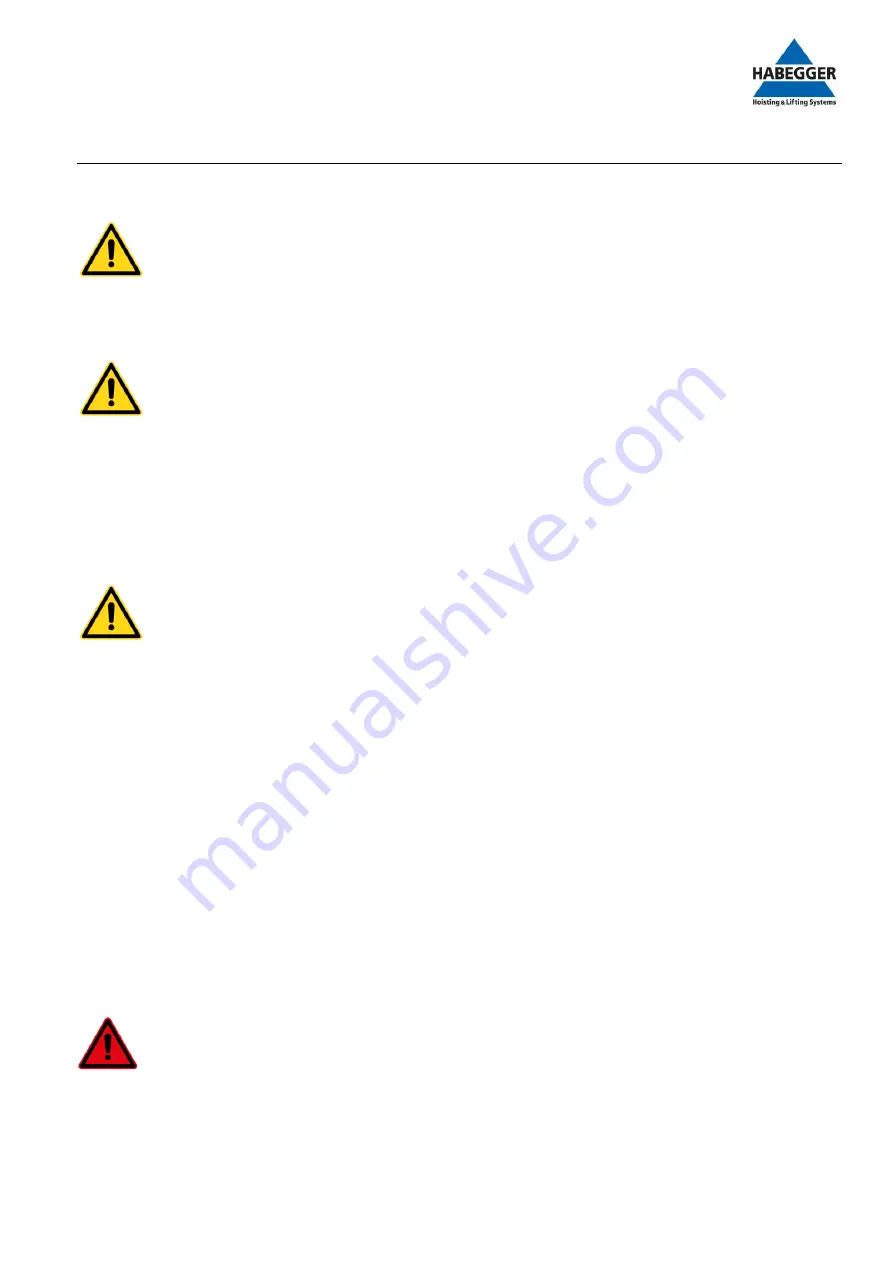
User Guide
TGT. 12.03.2019
Technical
Page 18 of 21
©Copyright by Habegger Maschinenfabrik AG
Version 03 / 12.03.2019
5.3
Pulling and hoisting
-
Check that you have the correct direction of rotation for hoisting and lowering before commencing opera-
tion.
-
If the direction of rotation is incorrect, consult an electrician to check the direction of rotation of the
phases and, if required, to correct them (check any extension cables which may be present).
-
Any extension cables up to 30 m long must have a minimum cross section of 5x2.5 mm
2
.
-
For longer cables this must be at least 5x4 mm
2.
After inserting the cable, start the motor by pushing the button on the pendant station.
Press the “Raise” button. (see chapter 2)
When hoisting, ensure that neither the housing nor the cable are being diverted or tilted by objects or obstacles. The freely
exiting rope may not be impeded.
-
Keep an eye on the rope during movement.
Never allow the hook to touch the housing.
Stopping the driving wheel:
Release button
In emergencies, e.g. in the case of jams:
Press the “Emergency stop” button. (see chapter 2)
Spring-loaded brake
The spring-loaded brake is securely mounted on the motor’s free shaft end. It is protected against moisture and foreign ob-
jects by a protective cap with a rubber seal.
The braking torque of 60 Nm is set in the factory and should not be changed. In de-energised states, the brake is engaged
using the built-in compression springs.
5.4
Lowering
Press the “Lower” button. (see chapter 2)
-
Danger of falling! Pay attention to end of rope! The unloaded rope should slide into the machine freely
and without kinks.
-
Stop lowering at least 2 m before the end of the rope.




































